It seems like we are in for a long summer of smokey air. A good way to keep up to date with air quality can be found on the NSW gov site. Allows you to better prepare for the daily activities. Lungs are tender, be kind to them.
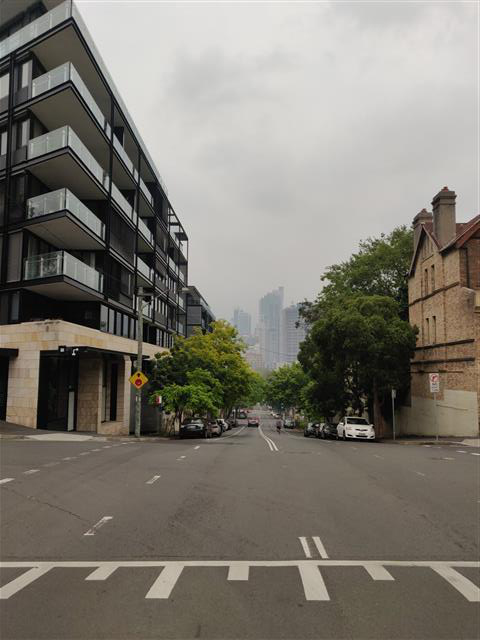
 The Pain Relief and Wellness Clinic
The Pain Relief and Wellness Clinic
It seems like we are in for a long summer of smokey air. A good way to keep up to date with air quality can be found on the NSW gov site. Allows you to better prepare for the daily activities. Lungs are tender, be kind to them.

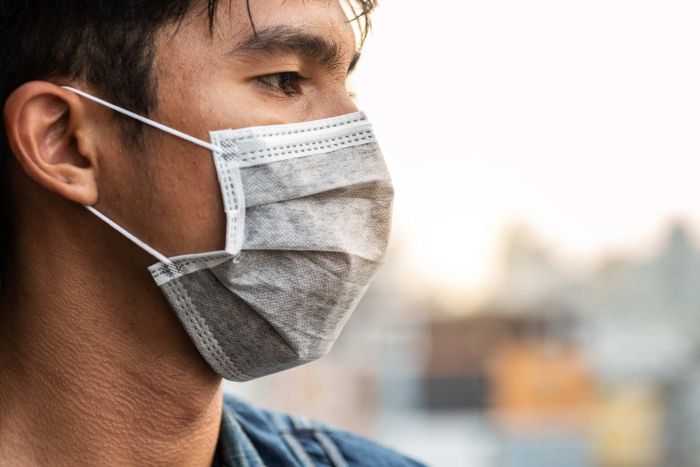
Minimise exposure. Staying indoors is probably the most effective. Bushfire particles are extremely small, 2.5 microns. Paper masks are pretty useless. They could give a false sense of protection so still keep exposure/outdoor activity to a minimum. Respiratory protection masks rated at P2 or higher offer some protection. The masks you buy at the hardware shop for protection against paint fumes. Note the seal needs to be air tight. If it leaks, it’s no protection. Beards make it near impossible. Air pollution isn’t just a nuisance, it can increase mortality and impact health.
https://www.abc.net.au/news/health/2019-12-03/face-masks-for-bushfire-smoke-haze-pollution/11760618
https://www.health.nsw.gov.au/environment/factsheets/Pages/bushfire-smoke.aspx
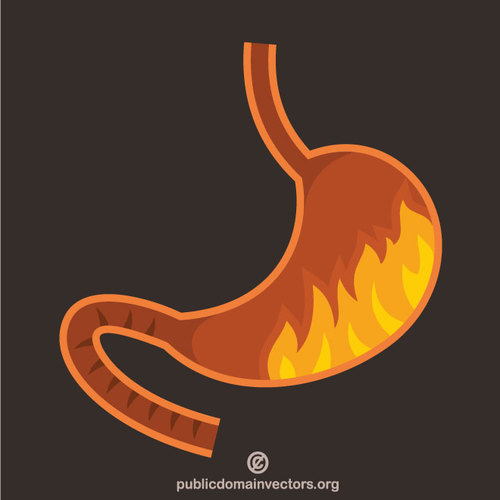
If you take proton pump inhibitors for reflux the timing of the medication is quite important. Nexium (esomeprazole) is a commonly prescribed medication. To get the best result you should take the medication just before meal time. The reason for this is:-
If you take the medication during the more dormant phase you may experience less effect of the drugs and they may seem ineffective.
This simple tip may help you get the results you are looking for and save you hunting around trying different drugs.
However, if problems persist keep investigating and consult your treating physician
If you can tolerate and digest cow’s milk it may be a better beverage to consume than a surgery sports beverage. Isotonic sport beverage like Gatorade do provide better hydration when the body has lost salts through sweating. However, the sweet content off these drinks can damage teeth if constantly sipping on them throughout workout. Also, refined sugars are generally best kept to a minimum in diet. Humble old milk has protein, natural sugars and amino acids perfect for post recovery hydration and nutrition. Further scientific study needs to be done for a definitive answer the question of sports recover is enhanced by cow’s milk… but in the meantime… why not try it and see how you respond? Get good quality organic non homogenised milk. 1 litre of top shelf milk probably costs the same as a Gatorade.
https://time.com/3656660/workout-drink-milk/
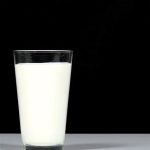
https://jissn.biomedcentral.com/articles/10.1186/s12970-019-0288-5
Leif will be attending a seminar on 5th, 6th and 7th of May.
Its called “Neuropuncture”. Its going to be a closer look at Neurological effects of acupuncture.
It shall be very interesting
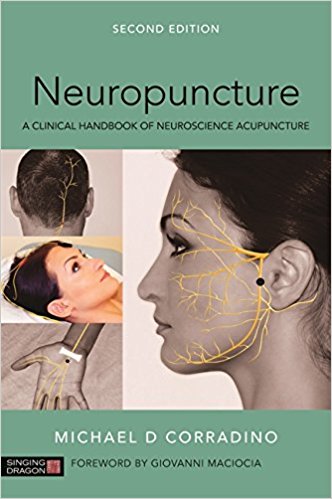
Lower back pain is terrible and best avoided. With some careful techniques and correct lifting a lot off back pain can be avoided. I’ve put together a short presentation video on how to better look after your back and some techniques and tips on avoiding lower back strain and damage to spinal discs
Lifting something of the ground using the legs to squat down
Using the knee and elbow to divert load from lower back
Golfers pick up
Lunging
Splits (abducting legs to alter task height)
I have also included a better way of straightening up from a bent over slouched back.
The key feature in all these techniques is to keep the spine in a neutral / stable position and let all the limbs do the awkward work.
Alternate link
https://youtu.be/5l5-7IlcSyg
Treat your back with love and it will love you back
|
|
|
|
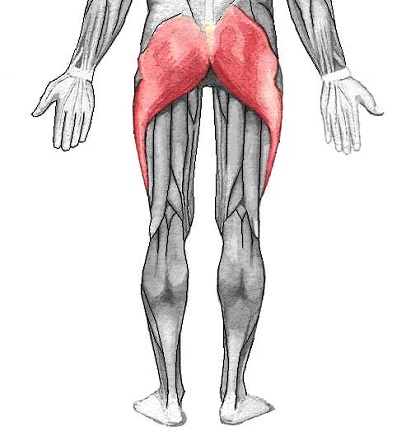
Your gluteal muscles have some important features:
• are the main muscles used for walking, when moving legs from hips
• essential for the stability of the hips when walking. Without them you would topple over to one side.
• allow you to extend your back
• allow you to stand from a sitting position
• Gluteus maximus supports the extended (straight) knee. It does this via the iliotibial tract (ITB). This is the fibrous band of connective tissue that runs down the outer side of the thigh.
Gluteal dysfunction and weakness can have quite a large effect on the functional physiology of the body. Glute weakness can cause some of the following:
• lower back pain – over-using lumbar muscles to compensate
• hamstring over-use (tightness and pain) –> can also then lead to pelvis rotation –> pressure and pain in lower back
• knee pain from reduced stability
• tight hip flexor
• ankle problems
• plantar faciitis
As humans, we tend to find the easiest and laziest way to do things. Perhaps this is energy conservation. For example, when picking something up from the ground we tend to lean over with a flexed back instead of bending the knees and squatting down. The gluteal muscles can simply just get deconditioned and weak through lack of use. The simple solution is to wake them up again and do a few exercises. Even doing something as simple as squeezing your butt cheeks together while waiting for the bus can help (try 3 sets of 10 reps) or whenever you remember during the day, for example whilst waiting for the jug to boil. Something this simple can help the brain and glutes make a better neurological connection and “switch on” better for movement patterns.
Pain can also be a limiting factor. There could be any number of pathologies in the hips and back creating a painful situation that limits movement. Pain is remarkable in that it causes an inhibitory effect on muscles in the affected area. Hence, once the pain has subsided the muscles can still be inhibited or have decreased motor response (“switched off”). Again, doing a few floor-based gluteal exercises can help to retrain the connection with the brain and the bum muscles.
For example, the correct firing order for leg extension (lying on tummy and raising leg up towards ceiling) is:
Glute -> Hamstring – > quatratus lumborum and lumbar muscles.
However, with a dysfunctional glute it can become:
Hamstring + lumbar muscles.
Hence, much more strain is placed on the surrounding structures.
Anatomy:
Gluteus maximus – the largest muscle in the body – forms the buttock cheeks.
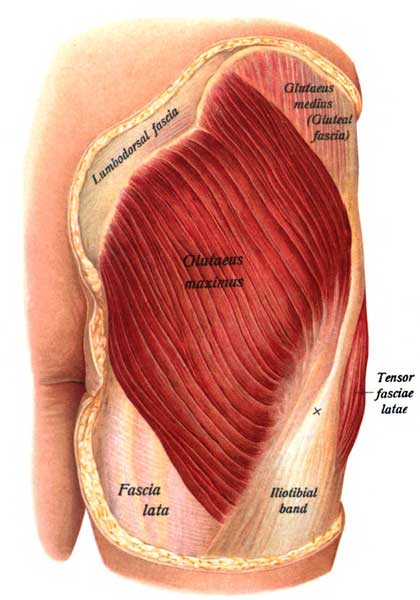
Gluteus medius and minimus – lateral stabilisers. These muscles are located on the sides of the hips. They wrap around the bony part of the thigh bone (trochanter of the femur).
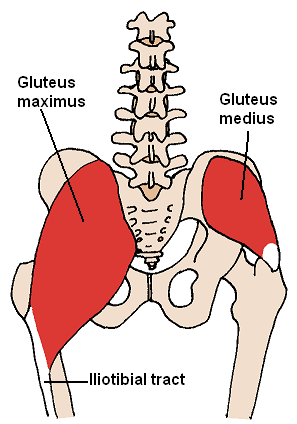
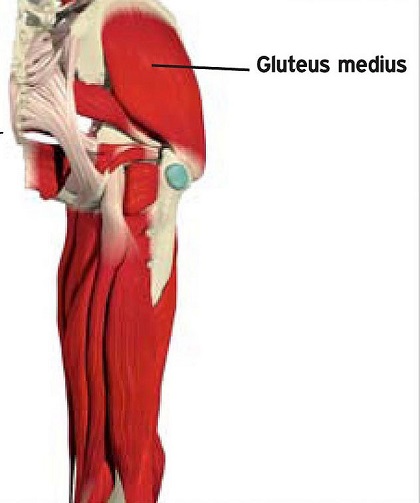
Gluteus minimus
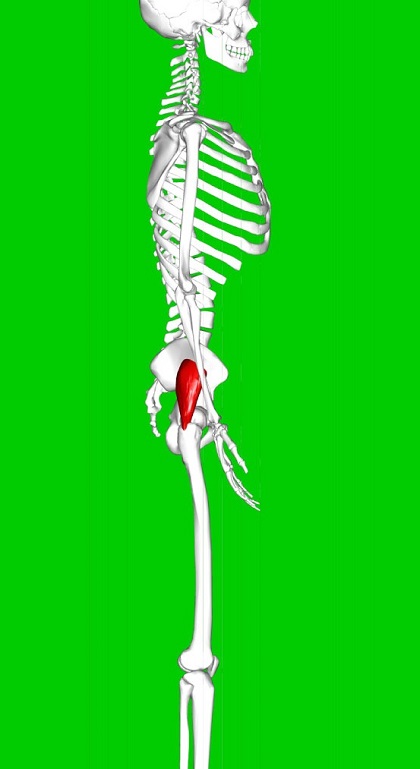
Training the glutes
Strong, healthy glutes are important for proper movement and health maintenance. However, there can be other problems that are present in the pelvic/lumbar region that need to be addressed before any rehab training and exercise should be performed. Muscular fatigue (“feel the burn”) is ok but acute and neuralgic pain is telling you some damage is going on. Please always train being mindful and respectful of your body’s abilities.
Below are a few glutes floor-based exercises to get you started.
Lying on the side, back should be straight (neutral spine), and all the movement should be occurring in the leg that is facing the ceiling. You can support your head and neck with one arm, and have something soft to lie on. You can use a yoga mat or towels. Please note it should not be painful to do these exercises. After a while you should feel muscular fatigue. However, if you experience any acute pain or nerve pain please stop and get assessed by a health professional.
Do each exercise 10 times then roll over to other side and complete 10 times on other leg. Repeat this for each exercise. Once you have done them all, go back to the top and re-do them. Try doing 10 minutes in total first. Then as you progress you can extend the time to 20 mins. Aim to do the exercises daily or every second day.
Clam : Open your legs just like a clam would open its shell
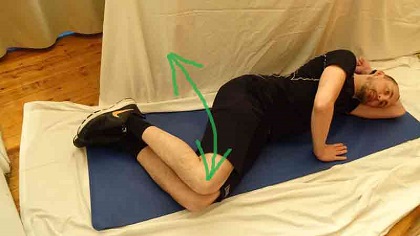
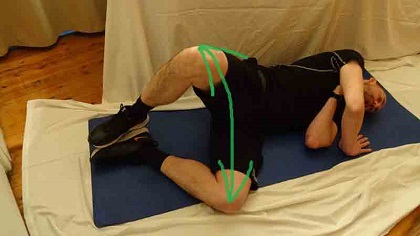
Side lift : Point your toes towards the ground. It helps activate more of the glute muscle. Then move your straight up as high towards the ceiling as you can. Then move it down again. Repeat.
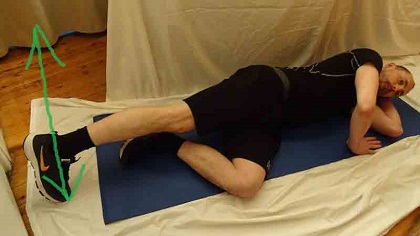
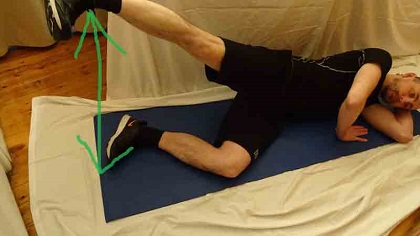
Toe taps: Point your toes towards the ground. It helps activate more of the glute muscle. Tap your big toe in front of you and then swing your straight leg back and tap behind you. Repeat.
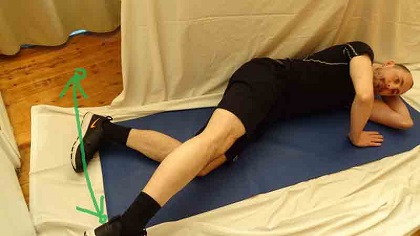
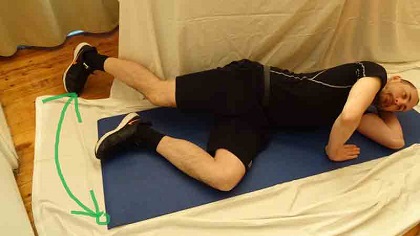
Kick: Just like kicking a football with a straight leg.
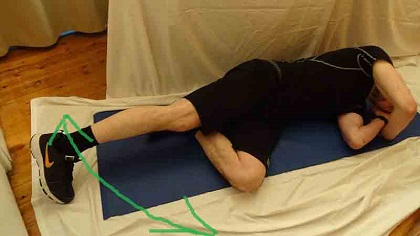

Bike circles: Like peddling on a bicycle. Move your leg in a circular fashion as you would when riding a bike. Go forwards 10 rotations then backwards 10 rotations.
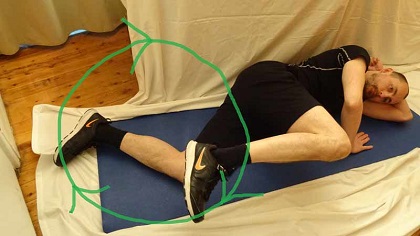
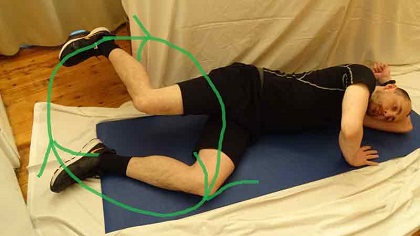
|
Sleep diary – Keep a note pad next to the bed. Make a note of how you sleep each night. It is also helpful to pen down persistent ideas in the mind. Sometimes writing down the things that are bothering you can help clear the mind and encourage sleep.
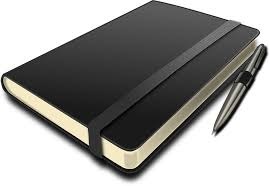
Soft music – Good if makes you relaxed. If music keeps you alert then it’s probably better not to use it.

Relaxation training – avoid intrusive and arousing thoughts. Guided imagery or meditation can be helpful. Sometimes recounting the plot of a novel or a movie can help to distract from intrusive thoughts and encourage the falling-asleep process.

Avoid daytime naps – If you really feel drained then try 10 minutes of meditation. If you do fall asleep make sure it is limited to 10 minutes. Handy to set a timer just in case you do (mobile phone or even egg timer). Naps are fine if they don’t interfere with even night-time sleep.
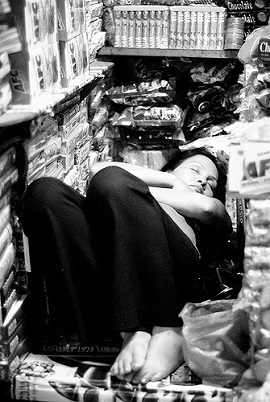
Eliminate stimulants – coffee, tea, soft drinks, large amounts of sugar in the evening.
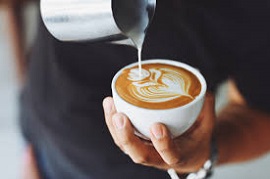
Try to maintain regular bed/wake schedule – 7 days a week, not just 5 days a week. For example, go to bed a 10 pm wake up at 6.30 am for all 7 days.

Create a dark sleeping environment, heavy curtains and ear plugs perhaps, or a noise-cancelling device if there are disturbing external noise issues (eg pool pump, trucks, dogs barking or very-early bird chorus).

Limit alcohol or just eliminate altogether. Booze makes you sleepy initially but causes agitation later on in the sleep cycle.
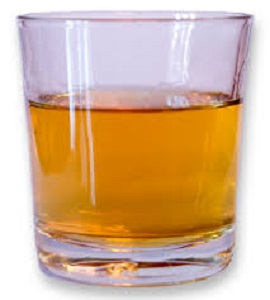
Get regular exercise, but avoid exercising 5 hours before bed. Intense exercise is better, something that gets you puffed and sweaty. Increased Cytokines increase non REM sleep – the restorative stuff.
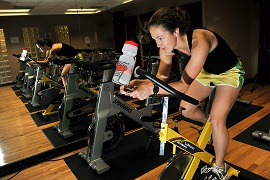
Use bedroom only for sleep and sex (behaviour conducive to sleep), although for some reading in bed or watching TV sends them to sleep.

Don’t look at the clock.
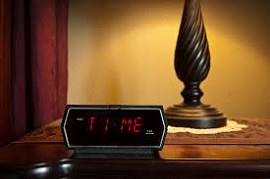
Reduce electrical devices. Switch off TV at the wall, shut down social media.
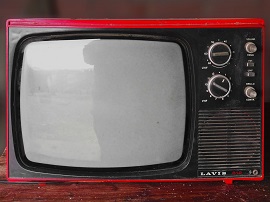
Well ventilated room. Fresh air, consider having a fan.

Tart cherry juice (unsweetened) has been shown to be helpful in increasing length and quality of sleep.
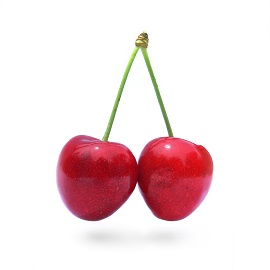
Eat foods high in tryptophan. This converts to melatonin. Melatonin is your night time sleep hormone. Turkey and chicken are high in tryptophan, as are seeds, nuts and soy.
